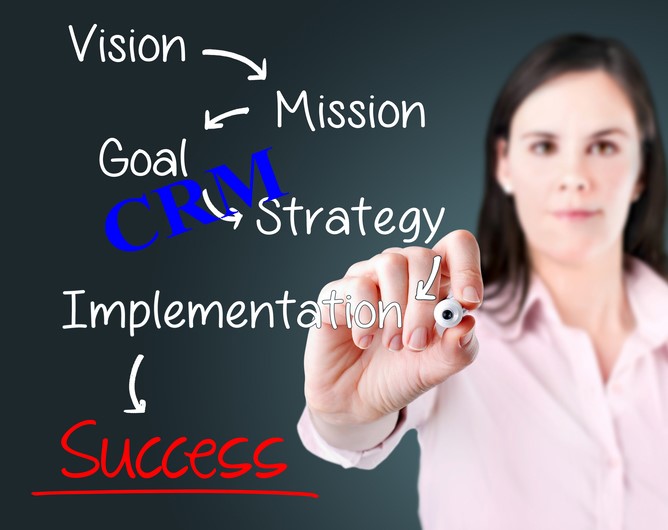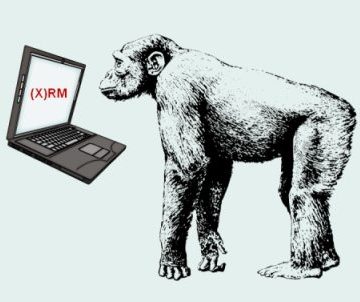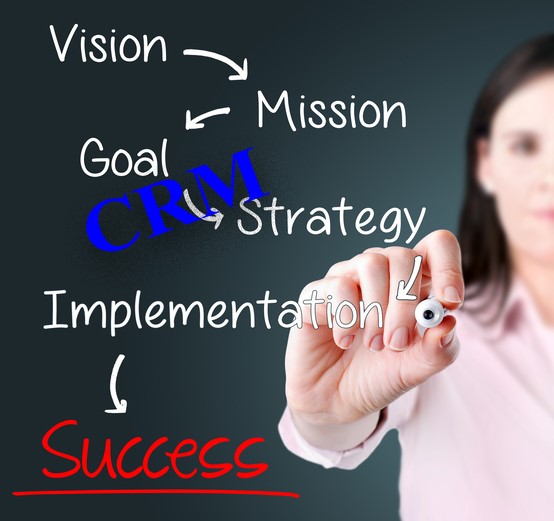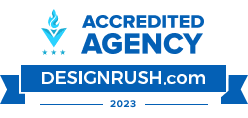CRM - Customer Relationship Management
WHAT IS CRM AND WHY IS IT SO IMPORTANT?
CRM, Client Relationship Management or Customer Relationship Management technology, are systems that provide a central and easy to access database repository for an organization’s key person and company contacts and the interactions that take place among them. Organizations adopt CRM systems to help manage contacts, build lists, identify and leverage relationships and grow their revenue and businesses.
CRM Systems have features that can help organizations to
- Manage people and company contacts
- Build, maintain and update lists
- Track and report on touchpoints or activities
- Identify and leverage relationships
- Coordinate efforts
- Target communications
- Segment audiences
- Automate processes
With all these features and functions, it shouldn’t be surprising that CRM software is one of the largest and fastest-growing technology categories. Spending on CRM technology has been increasing each year, and the worldwide spend on CRM technology is expected to reach USD $114.4 billion by 2027.
- Increase efficiency
- Improve service
- Develop business
- Increase revenue
- Reduce costs
- Enhance profitability
- Evaluate ROI
CRM CHALLENGES
– Up to 70% of CRM Implementations Fail to Meet Expectations
While CRM investments – and impact – can be significant, success with the technology continues to be elusive. In fact, respected research organizations have consistently shown that CRM failure rates may be as high as 70%.
What this research fails to show is that when CRM fails to meet expectations, it’s often because those expectations are unrealistic. CRM systems typically fail to meet expectations for a number of reasons. As CRM success consultants who have worked together to help hundreds of organizations achieve success, the challenges our clients most frequently encounter include:
- Lack of Strategy – Too many organizations rush to purchase technology without first having a sound strategy for success. The beauty of CRM systems is that they can do a thousand things. The problem is that they should probably only do two or three initially. Instead of trying to do too much, it’s important to focus on just a few areas where CRM can really make a difference for the unique needs of your organization.
- Poor adoption – Lack of user adoption is one of the most painful problems we often see. Organizations that have invested significant resources in this technology often find that the software doesn’t deliver on its potential because individuals don’t use it.
- People and process issues – When these systems don’t meet expectations, failure is almost always due to people and process problems or change management challenges rather than technology issues.
- Lack of leadership support – Because CRM can fundamentally change the way an organization operates, it requires buy-in from the top. Leaders should be committed to sponsoring and championing the implementation to encourage system use throughout the organization.
- Dedicated Resources – Success with CRM often requires a significant resources including time, money and people. If organizations don’t devote the required resources, they often won’t realize returns on their technology investments.
- Poor data quality – Bad data is perhaps the most common and persistent problem that leads to CRM failure. Poor data quality not only frustrates marketing and sales efforts but can also cause a lack of trust in the system, resulting in poor adoption.
As you can see, many of these issues are interrelated. Problems in one area often leads to issues in another area. As a result, it’s important to focus on any and all areas that may be problematic in your organization.
CRM SUCCESS STEPS
CRM failures can be frustrating, but the good news is that CRM success is possible. By focusing on a few priorities and following some simple steps, real returns can be gained on CRM investments.
Step 1 – Needs Assessment
Success starts with a keen understanding of your organization’s needs and requirements. Before buying CRM software, it’s imperative to thoroughly assess your needs and the reasons for acquiring the technology. Start by asking some fundamental questions like:
- Why do we want/need a system?
- What are we trying to accomplish?
- Who will use the software?
- What value will the system provide?
- How will we measure success?
- What issues or challenges may we run into?
Once you have identified your core constituents, it’s important to solicit their opinions and gain their buy-in. Start by scheduling meetings with key stakeholders whose input and participation will be critical to success. Rather than a conversation about CRM technology, the focus should be on topics that will resonate with the users such as:
- Solving problems
- Automating processes
- Increasing efficiency
- Reducing costs
- Generating revenue
- Identifying and enhancing relationships
- Improving communication
- Fostering coordination
- Enhancing client or customer service
- Identifying and leveraging opportunities
- Enhancing sales or business development
Step 2 – CRM System Selection
Once your goals and needs have been identified, the search for the software becomes a much easier and more manageable proposition. But remember to not let the software dictate your strategy.
Selecting CRM technology involves demonstrations of myriad features and functions by various CRM system vendors. Avoid getting caught up in the bells and whistles of the various systems during these presentations, and don’t lose sight of your established goals.
To sidestep the “dog and pony show,” it is helpful to create a demonstration roadmap that tracks to your organizational needs and guides the vendors to focus on only the core requirements and goals that have been identified. A related demo scorecard can be used to support the process, ensuring an objective assessment of software options.
Step 3 – Dedicate Resources
It’s important to remember that CRM success and results require the dedication of resources including time, money and people. In addition to investing in the CRM software, it’s critical to budget for professional services, implementation and integration as well as communication, training and change management.
Step 4 – Data Quality
Before beginning a new CRM project or attempting to enhance the success of an existing implementation, it is important to evaluate your data quality. Failure to focus on data quality issues can result in a project that takes longer and costs more than expected. Additionally, bad data can hinder communication, impede targeting and lead to adoption issues.
The first step is to assess the mess. Performing a Data Quality Assessment or Datanalysis can help determine the scope of your data cleanup, how long it may take and how much it will cost. Once you understand the extent of the issues, it’s important to dedicate initial and ongoing data quality resources. It can be helpful to start with automated data cleaning , which is an efficient and cost-effective way to clean as much data as possible. Then, if your organization requires the highest level of data cleanliness, you should follow up with manual data stewarding by trained and experienced data quality professionals.
To enhance cleanup efforts and prevent future data quality problems, it’s also important to establish and document your organization’s data standards in a Data Quality Standards Manual that outlines the organization’s specific data styles and processes to ensure consistent contact data entry, formatting and maintenance.
Step 5 – Communication
Effective communication is essential to CRM adoption and, ultimately, CRM success. To get busy users to utilize the system, they have to believe that the system will provide value – not only for the organization, but for them individually.
Communications should focus on how CRM can make users’ work lives easier, solve problems, automate processes, improve service and increase revenue and growth. Depending on the size of your organization and how many users you have, it can be beneficial to put a formal communications plan in place to set expectations, build enthusiasm and promote successes. Some organizations even create internal branding campaigns, contests and prizes to drive some friendly competition – and adoption.
Step 6 – Training
Your CRM investment will not be fully realized unless the system is used regularly and consistently. This means that individualized, user-focused training is critical. CRM Training should focus on the why, not the how, of CRM. For best results, training should be tailored to the needs and business processes of key user groups. Focus on the their perspective, identifying reasons why they should want to use the system and emphasizing “what’s in it for them.”
Trainers should be a key part of the CRM team and should be involved early and often. CRM training plans, processes and timelines should be created, and metrics defined for measuring success. Training should focus on ease of use and the benefits and value the system can provide. A variety of training methodologies should be considered from e-learning to desk-side to classroom. Supporting curricula and materials should be developed in multiple formats including web-based, video and hard copy. Enhanced, ongoing training should also be planned for as new people join the organization.
THE CRM TEAM
Good results require good people. Depending on the size of the organization, some key CRM roles to consider for your CRM team include:
- CRM Managers – Your CRM management staff can be critical to initial and ongoing implementation success. They will organize and coordinate meetings with the CRM providers, marshal internal and external resources and keep the project on track, on budget and on time. After the initial implementation, they are critical to ongoing adoption and success.
- Data Stewards – These dedicated individuals will ensure that your data quality inspires adoption by regulating, validating and updating data.
- CRM Administrators -Your admin staff will keep the system running smoothly and ensure any required updates and upgrades are attended to.
- Trainers – Your training staff should make sure that all personnel and new hires have the knowledge they need to succeed.
- Help Desk Staff – Some organizations have front-line support staff to triage any technical issues for CRM users.
Because it can be challenging to find knowledgeable, experienced CRM staff, many organizations now outsource some or all of their CRM functions to experts. This can also be a good option if your organization isn’t large enough or doesn’t have the budget to hire full-time CRM support. Qualified CRM service providers offer a variety of cost-effective, outsourced staffing options to provide full-time ongoing support or to staff limited scope or part-time projects.
GROW YOUR CRM
It is important to recognize from the outset that CRM never ends. Instead, it’s an ongoing process and a fundamental change – and improvement – in how your organization manages its most important assets, its relationships. This means it’s always growing – and it’s important to understand where you are currently in your CRM lifecycle and where you want to be.
Regardless of where you are in the evolution of your CRM – selecting a new system, improving an existing implementation or focusing on ongoing success – with the right strategy, planning, processes and resources in place, CRM success is possible. And because CRM never ends, the good news is that you have forever to get better at it.

NEXT STEPS FOR SUCCESS
If you need help selecting, implementing or enhancing your CRM, the team at CLIENTSFirst Consulting is here to support you. For more than a decade, our team of almost 100 consultants and experienced professionals has been helping firms and organizations achieve CRM success. Our CRM Success consulting team can help with needs assessment, goal setting, system selection, vendor evaluations, targeted CRM communications planning and CRM training. Our team of outsourced professionals can assist with initial or ongoing, and full-time or project-based staffing of any CRM or eMarketing positions.
Would you like a complimentary assessment of your CRM needs?















































